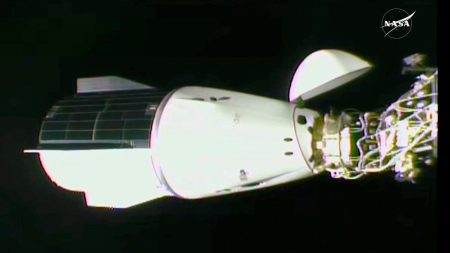Earthquakes in Texas Oil Country Highlight Growing Concerns Over Water Disposal Practices
A Series of Shakes: Earthquakes Rattle the Permian Basin
Two significant earthquakes struck the Permian Basin, the top U.S. oilfield, in the span of just a few days, sending shockwaves through the Texas oil industry. On February 14, a magnitude 5.0 quake hit Culberson County in West Texas, followed by a smaller but still notable magnitude 4.7 tremor on the morning of February 20. Both earthquakes occurred in an area already under close watch by the Texas Railroad Commission (RRC), the state’s oil and gas regulator, due to a surge in seismic activity linked to fracking operations. The quakes have reignited concerns about the disposal of saltwater, a byproduct of oil and gas production, and its potential to trigger increased seismic activity.
The Link Between Oil Production and Earthquakes
The earthquakes in Culberson County highlight a growing issue in oil-producing regions: the connection between fracking, wastewater disposal, and seismic activity. Fracking, a process used to extract oil and gas, produces large amounts of saltwater, which is often injected back into the ground. This practice, while common, has been linked to an increase in earthquakes in areas like Texas and Oklahoma. The injections can alter the underground pressure, causing faults to shift and triggering quakes.
Regulators in both states have already taken steps to curb the phenomenon by limiting wastewater injection in certain areas. However, the recent earthquakes in West Texas suggest that more needs to be done to address the issue. The region has experienced a significant increase in seismic activity in recent years, with the largest earthquake on record in Culberson County measuring 5.4 in magnitude in 2022.
Regulatory Response and Future Changes
The Texas Railroad Commission is now considering new policies to address the growing concern. According to Laura Capper, an advisor with EnergyMakers, the focus is likely to be on shallow injection pressures and increased monitoring of deep seismicity. The RRC has already taken action in response to previous quakes, banning saltwater disposal in the Northern Culberson-Reeves Seismic Response Area in January 2024. This decision followed a series of seven earthquakes, including one measuring 5.2 in magnitude, that occurred over just five weeks at the end of 2023.
Capper noted that earthquake activity in the Northern Culberson-Reeves area has decreased since the restrictions were put in place, suggesting that limiting wastewater injection can help reduce seismic events. However, the recent earthquakes in Culberson County indicate that the problem persists and may require further action. According to Kelly Bennett, founder and CEO of B3 Insight, an oilfield water intelligence consultancy, the cost of water management is likely to rise as operators seek more sustainable ways to dispose of wastewater.
Industry Solutions: A Push for Better Water Management
The latest quakes could accelerate the adoption of new water disposal projects in the Permian Basin. One notable project is being developed by WaterBridge, a midstream water management company, in partnership with BPX. The initiative aims to construct and operate produced water handling infrastructure capable of managing up to 600,000 barrels of water per day over a ten-year period. The project is expected to come online within the next three years and could serve as a model for other operators in the region.
Bennett emphasized that increased investment in water management infrastructure is essential to address the challenges posed by wastewater disposal. "I think we all agree that the cost of water management is going to have to increase in order to provide a means to transport water away from these areas that are problematic," she said. This shift could lead to more innovative solutions and a focus on reducing the environmental impact of oil and gas production.
The Road Ahead: Balancing Economic and Environmental Needs
As the oil industry grapples with the challenges of wastewater disposal, the recent earthquakes serve as a stark reminder of the delicate balance between economic productivity and environmental sustainability. The Permian Basin remains a critical player in the U.S. oil industry, but the growing frequency of seismic events linked to fracking and water disposal practices underscores the need for proactive measures.
For residents in the affected areas, the quakes are more than just a abstraction—they represent a tangible threat to their safety and property. While the economic benefits of oil production are undeniable, the long-term risks associated with wastewater disposal cannot be ignored. The coming months and years will likely see continued debate over how best to regulate the industry while ensuring that the Permian Basin remains a viable and sustainable source of energy for the future.
In the meantime, the Texas Railroad Commission’s next moves will be closely watched by industry stakeholders, environmental advocates, and local communities. With the right combination of regulation, innovation, and investment, it may be possible to mitigate the risks posed by wastewater disposal and safeguard both the environment and the economy.









